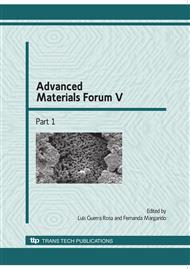p.564
p.571
p.578
p.585
p.592
p.597
p.605
p.612
p.618
Welding with High Power Fiber Laser API5L-X100 Pipeline Steel
Abstract:
The increasing length of oil and gas transportation pipelines, associated with their construction and operating costs, has lead to the development of new steel grades with higher performance. The API 5L- X100 is a new high strength steel for pipeline applications which enables the use of thinner walled pipes, lighter to transport and easier to handle on site, allowing greater operating pressures and reducing overall costs. However, this steel grade has limited ductility. Since advantages largely surpass disadvantages, these materials are being seen adequate for earthquake risk areas and low temperature environment as in the Arctic region. X100 grade is already used in northern Canada and is planed for Japan Sub Sea. Automatic metal arc welding on site is the most common method of welding onshore pipelines in steel grades X65, X70 and X80. The use of high strength steels requires the development of new welding procedures with narrow specifications and the X100 steel has limited weldability. Research is needed to develop appropriate welding procedures, avoiding typical metallurgical problems like cold cracking and toughness reduction in the weld area and to achieve high productivity and economical feasibility. This paper presents results on API X100 steel grade welded by high power fiber lasers. Since these lasers are quite new in the market, an analysis of the laser source, as well as the beam/material interaction is made. The welds produced were investigated for both macro- and microstructural analysis and mechanical properties, contributing to a better understanding of the transformations induced in this material by the thermal cycle associated with laser welding.
Info:
Periodical:
Pages:
592-596
Citation:
Online since:
January 2010
Authors:
Keywords:
Price:
Сopyright:
© 2010 Trans Tech Publications Ltd. All Rights Reserved
Share:
Citation:


